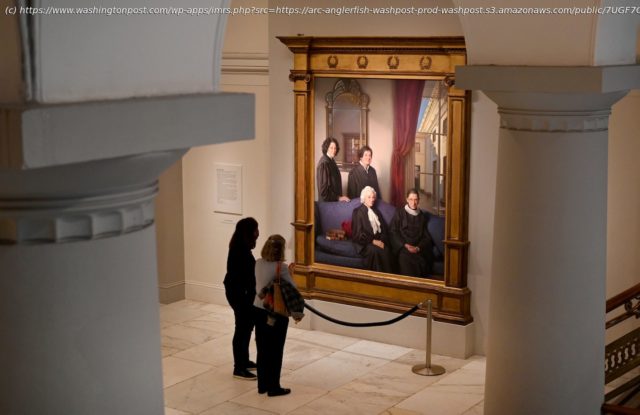If confirmed, Judge Ketanji Brown Jackson would join Justices Sonia Sotomayor, Elena Kagan and Amy Coney Barrett on the nine-person Supreme Court.
Justice Ruth Bader Ginsburg used to lament what she imagined schoolchildren saw when they visited the Supreme Court: “All of these men and one tiny woman.” After pioneering Justice Sandra Day O’Connor retired and as late as 2009, Ginsburg was that lone female justice. But if President Biden’s Supreme Court nominee Judge Ketanji Brown Jackson is confirmed, it would mean four women would simultaneously serve on the Supreme Court for the first time in its 233-year history, as close to gender parity as possible on the nine-person bench. That won’t change the court’s ideological direction, and law professors and political scientists continue to debate whether gender significantly affects legal interpretation. But those who welcome the change say it is important for representational reasons, and they assert it could bolster the public’s view of the court’s legitimacy. Biden nominated Ketanji Brown Jackson to Supreme Court “It’s remarkable to think that we had to wait until 2022 to get to parity, but it also is something to celebrate as a country,” said Fatima Goss Graves, president and CEO of the National Women’s Law Center. “What we know about the research around institutions generally is that having the number of women that allow parity changes the conversation in the room, changes the perspectives that are raised and I suspect that will be true also for the Supreme Court.” Biden acknowledged the symbolism Friday when he introduced Jackson. “For too long, our government, our courts haven’t looked like America,” Biden said. “And I believe it’s time that we have a court that reflects the full talents and greatness of our nation with a nominee of extraordinary qualifications and that we inspire all young people to believe that they can one day serve their country at the highest level.” O’Connor, confirmed to the court in 1981, and Ginsburg, who joined 12 years later, were both fond of quoting Minnesota Supreme Court Justice Jeanne Coyne’s answer to whether men and women see the law differently. At the end of the day, Coyne said, “a wise old man and a wise old woman reach the same conclusion.” But O’Connor “also said many times that she was very happy to be the first but she didn’t want to be the last,” said Renee Knake Jefferson, who along with Hannah Brenner Johnson wrote “Shortlisted: Women in the Shadows of the Supreme Court.” “She assumed this enormous burden of having to represent all things to all people about the woman’s voice on the court.” Ketanji Brown Jackson found a path between confrontation and compromise When O’Connor learned after announcing her retirement that President George W. Bush planned to name a man as her successor, she said she regretted seeing “the percentage of women on our court drop by 50 percent.” (O’Connor,91, retired from public life in 2018 after disclosing she had been diagnosed with the early stages of Alzheimer’s-like dementia.) from O’Connor’s retirement in January 2006 to the confirmation of Justice Sonia Sotomayor in the summer of 2009 — that “you saw some of her most full-throated dissents.
Home
United States
USA — mix Four women on the Supreme Court would bring historic, near gender parity...






